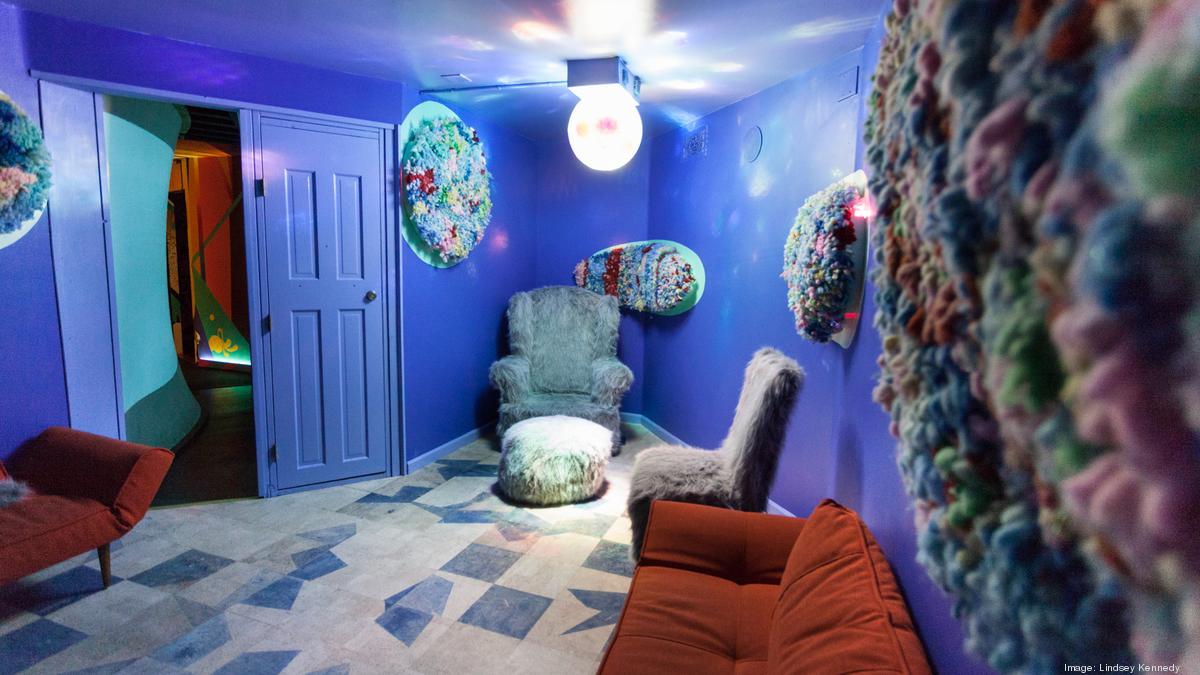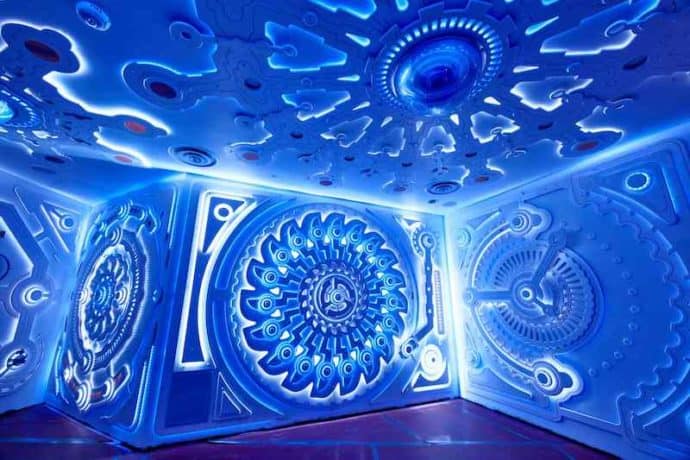
This made it possible to breeze through our pixel mapping process during crunch time in the last few days.
#AREA 15 MEOW WOLF INSTALL#
This was also nearing the end of my available time in Vegas, and since this install was taking some extra time I busied myself with building and preparing a full pixel mapping software frontend that could create an instance of the tiles that were being inserted, flash it's pixels in a way that allowed us to identify orientation, and axis flip status, as well. Jon Haas was the lead video and lighting designer on this element. The heavy glass etched tiles had already been laid, leaving only a gap to slide flexible and cuttable paper LED product into from the sides. The led floor that I built the software for was a work of genius considering the constraints and challenges with installing it. The narrative idea was that the "Source", which is being produced in The Factory connected to this area, was leaking out into the desert, resulting in mutated and psychedelic phenomena. This particular LED piece was a supporting part of a much bigger, perhaps the biggest individual "room" in the space, the Projected Desert ( Coco Labs). This can cause visual banding if the content is too high frequency, so emulating all of these attributes in 3d made for a very smooth transition to working onsite with the content we already had. The LED product used here had 1 addressable pixel for every 3 physical pixels, so this would cause the content to be interpolated in such a way that every 3 pixels down the strip showed the exact same values. However on the leds it achieves the desired effect, and in the end that's all that matters! The content on the right looks blurry, extremely saturated and a bit cheesy. It's important to simulate the real life leds as much as possible in terms of pixel density and spacing when building content because the density, spacing, and layout drastically impacts how the content that is developed will look. On the left, you can see what the raw texture looked like, before being mapped or sampled.
/s3.amazonaws.com/arc-wordpress-client-uploads/sfr/wp-content/uploads/2018/01/18115102/Meow-Wolf-Vegas.jpg)
The results were immersive and entrancing.ĭirectly above, you can see some examples of the TouchDesigner scene as it looked before it got mapped to leds on the right. Max sent the recorded data to TouchDesigner as OSC messages, which I would ingest and use to drive various elements of the scenes. The multi channel audio and spatial data was played back over the speaker arrays using Max. The audio was produced in Ableton, but rendered out with associated spatialization information. I did some work on the system architecture here, but really my primary task, and what I spent a good half of my onsite days doing was was developing content for this tunnel, and working with feedback and resolution constraints to make visual landscapes that would move and react to spatialized audio cues. Instead of linear strip chases and things like that, we were able to move into the realm of creating low res 2d scenes, that would render unwrapped, around the entire hallway. The LED tunnel that connected The Factory to several areas in the DramCorp offices was unique, in that the installation was made almost entirely from led strips laid out along the hallway, creating an array of pixels dense enough to make more hybrid content possible. While GeoPix provided the framework through which to map 30+ content streams onto their respective target pixels, we also needed a totally independent piece of software to handle the generation of that content, that would also communicate with other systems on the network, synchronizing with the audio and additional lighting systems, as well as some interactive elements in the space, that guests could trigger causing a temporary animation to play in the space.įor this, I built a rough draft remotely before the onsite month of January, and once on site we refined this software into a sort of timeline based fixed playback system that contained many cues, for different moments in the half hour audio track. Given that GeoPix excels at doing 3D content projection, it made sense as it allowed Creative Director Jake Snider, to make content specifically for different regions of space, as well as some global content that passed all of the leds simultaneously. To pull this off, Meow Wolf decided to adopt GeoPix into the content pipeline. The glowing liquid flows through pipes going every which way (that's the Floppy Flex), creating a very fluid, dynamic, and beautifully eerie aesthetic with the accompanying soundtrack.


The idea narratively speaking was that The Factory is where "The Source" is produced. The Factory is an explorable space with a very metal & industrial feel, with an led product called Floppy Flex outlining much of the architectural outlines and highlights of the space.

The Factory is one of the larger themed areas within the the Omega Mart experience, and my original connection to the project.


 0 kommentar(er)
0 kommentar(er)
